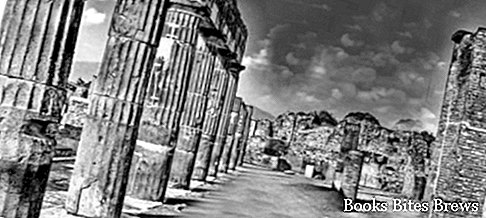History of Pompeii starting from the excavations, which brought to light the ancient city that was buried due to the catastrophic eruption, an exceptional testimony of Roman civilization.
Origins of Pompeii
It all started with the first causal discoveries that occurred at the end of the sixteenth century, during the reclamation works that affected the Sarno Valley.
In 1748, under Charles III of Bourbon, the first underground explorations began which led to the identification of the Pompeii site, placed on a buttress produced by a lava flow, emitted by Vesuvius during an eruption that occurred in prehistoric times.
The excavations brought to light a city of the ancient world, an exceptional testimony of Roman civilization, where life stopped suddenly in the year 79 AD, when a catastrophic eruption of Vesuvius covered with flaming lapilli and ash, men and things, under a layer of eruptive material 4-5 meters high.
Pompeii originated in the seventh century BC with the unification of several agricultural centers, it fell under Greek hegemony and for an Etruscan period, subsequently ended up in the hands of the Samnites.
In the Samnite era the city experienced a prosperous period, also thanks to the wealth deriving from the production and trade of wine, as evidenced by the monuments, the urban development and the construction of the new fortification of the city.
But after losing the rebellion war of the Italian cities against Rome, in 80 BC Pompeii was besieged and won by Silla, therefore it lost its autonomy and became a Roman colony, with the name of Colonia Cornelia Veneria Pompeianorum, with a consequent change in public and religious offices.
In the imperial age, with the progressive Romanization of social life, the city took on the architecture and art of Roman culture.
In 62 AD an earthquake struck Pompeii causing extensive damage, so much so that at the time of the eruption of 79 for many buildings the reconstruction or restoration work had not yet been completed.
Excavations
Pompeii, once dissolved by the eruptive material, has come to our days not only with its architecture and its urban structure, but also with the daily life of its inhabitants, made of habits, crafts, objects, written on the walls, all like it was that day when the eruption stopped time.
During the excavations cavities were identified in the ground, it was the void left by the numerous bodies of the victims of the eruption.
Recommended readings- Sapri (Campania): what to see
- Campania: Sunday day trips
- Amalfi (Campania): what to see
- Acciaroli (Campania): what to see
- Teano (Campania): what to see
Through a hole liquid chalk was poured into the voids where only the skeletons were located, thus obtaining casts, useful to provide testimony for future generations of the tragedy that took place in Pompeii on that day.




